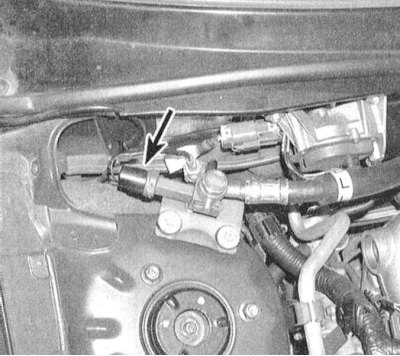Examination
Note. Performing the procedure described below may lead to the entry into the OBD memory of a malfunction, which will be highlighted by a control lamp "Check engine". Upon completion of the check and the corresponding remedial repair, do not forget to clear the system memory (see Section On-Board Diagnostic System (OBD) - the principle of operation and fault codes).

1. Disconnect the electrical wiring from the sensor-switch and connect an ohmmeter to the terminals on the assembly case.
2. Run the engine to idle.
Attention! Make sure that the connecting wires do not come into contact with moving components in the engine compartment.
3. Bring the front wheels of the car into a straight line and read the ohmmeter reading, which in this case should be equal to infinity.
4. Turning the steering wheel in any direction, observe the meter readings. When the steering wheel approaches any of the extreme positions, the PSP sensor-switch should close, which is confirmed by the readings of the ohmmeter close to zero.
5. At negative results of check replace the gauge switch. If the sensor-switch is OK, you should check the engine idle settings. Also check for an open in the wiring coming from the PCM. Evaluate the quality of the ground wire of the sensor harness black wire.
Replacement
1. Disconnect the electrical wiring from the sensor-switch
2. Using two wrenches, unscrew the sensor switch from the connection block.
3. Install a new sensor-switch in place of the removed one, connect the electrical wiring.
4. Remove air plugs from the hydraulic path of the power steering system (see chapter Suspension and steering). Correct the hydraulic fluid level if necessary (see chapter Settings and ongoing maintenance).